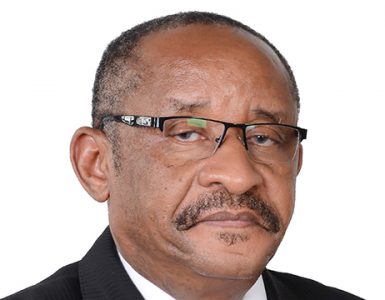There’s a positive correlation between low income countries and low levels of infrastructure and investment levels, which keeps many of them trapped in the lower-end of the developmental curve. According to UNCTAD1 data, foreign direct investment in Malawi increased from USD 120 million in 2013 to USD 143 million in 2015. Although this signals adequate growth at 19.1% in two years, the foreign investment is relatively low at 2.2% of GDP. On the other hand, the overall SADC region experienced foreign direct investment growth of an impressive 63.3% from USD 11.0 billion to almost USD 18.0 billion over the same period. The discrepancy in levels of foreign direct investment affirm the fact that the Malawian government ought to make significant strides in creating the conducive economic environment that encourages much-needed foreign direct investment in a bid to create more job opportunities for its people.
Despite the challenges Malawi is experiencing in attracting large capital inflows, the country’s future prospects remain hopeful in the medium term by virtue of being a member of the SADC. Globally, the foreign direct investment inflows totalled USD 1.43 trillion in 2013, rising gradually to USD 1.77 trillion in 2015. This represents a 23.8% increase, comparatively less than the 63.3% increase within the SADC over the same period. The relatively higher growth rate in foreign direct investment inflows represents the growing share of foreign direct investment within the SADC region, which affirms the region’s current and future potential to attract foreign investment and thereby stimulate economic growth.
Malawi is a beneficiary of a USD 146.7 million total credit extension facility (as at December 2016) which was initially signed in 2010 by the IMF under the Extended Credit Facility (ECF) agreement. The initial amount of USD 80 million was transferred to the Malawian government in 2010 with the intention to set the scene for sustained economic growth and address the country’s external imbalance. However, since 2010 Malawi has lacked the necessary thrust to make significant economic developments, defaulting several times on its IMF repayments, prompting several credit extensions by the IMF under the ECF agreement.
The most recent credit extension occurred on the 5th December 2016, where the Executive Board of the IMF approved an extension of Malawi’s arrangement under the ECF to June 30, 2017. The extension included an excess USD 49.2 million aimed at providing the Malawian government additional time to fulfil its credit obligations with the IMF, enabling the country to fulfil its short-term objectives. Furthermore, this creates a short-term easing of the cost of repayment for the Malawian fiscus is aimed at the achievement and maintenance of macroeconomic stability, the implementation of policies and structural reforms to spur growth in Malawi.
Aside from increasing its foreign direct investment inflows, Malawi needs a radical diversification of its economy in order to stimulate export growth and create much-needed jobs. Therefore, the temporary reprieve for Malawi in the form of the credit extension issued by the IMF doesn’t preclude the country from making the necessary structural adjustments needed to place the country on a growth and developmental trajectory.
Real GDP is expected to increase from 2.7% in 2016 to 4.5% in 2017 according to the World Bank, although this is from a low base. Additionally, if the recommended fiscal austerity is exercised, consumer price inflation is forecasted to fall from 19.8% in 2016 to 13.9% in 2017, which will be a relief for the average Malawian citizen.
The outlook on Malawi’s economic recovery for FY2017/18 remains ambiguous. Predictions point to a recovery, although this is dependent on continued fiscal restraint as well as effective responses by the government to challenges of food security. Malawi’s monetary authority should solely focus on curbing headline inflation in the short-term and as interest rates begin to fall business confidence will be restored. Lower costs of borrowing will stimulate private sector investment and job creation, while reducing the government’s interest payments on debt.
1 United Nations Conference on Trade and Development














































